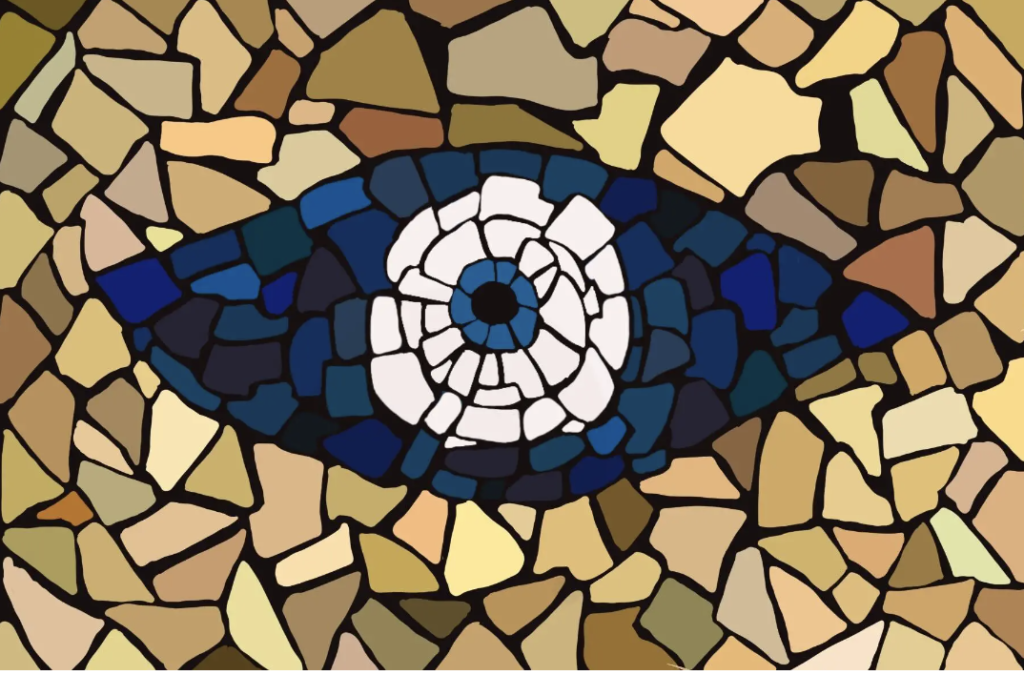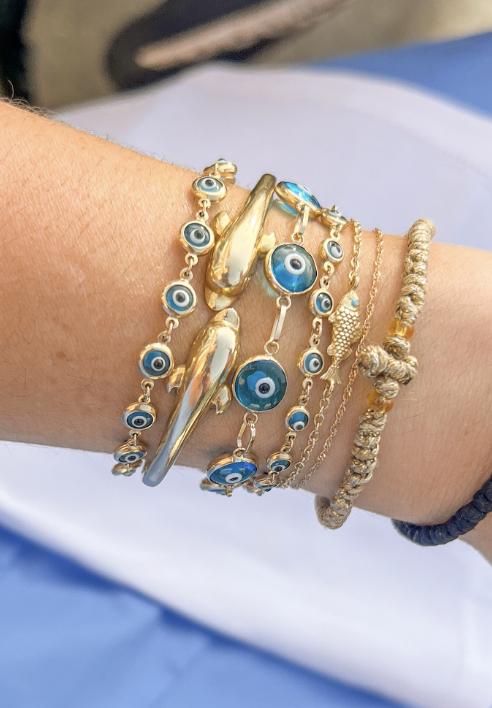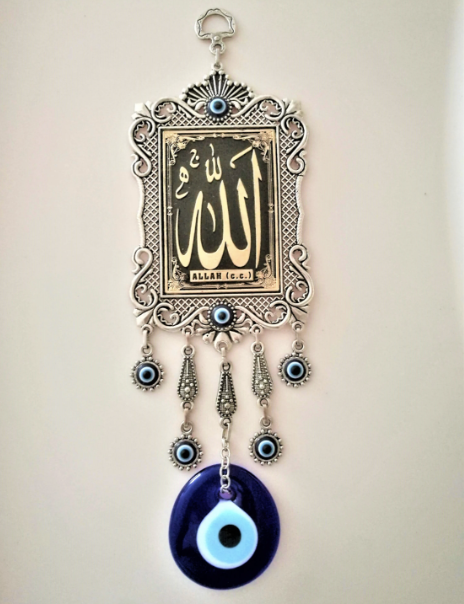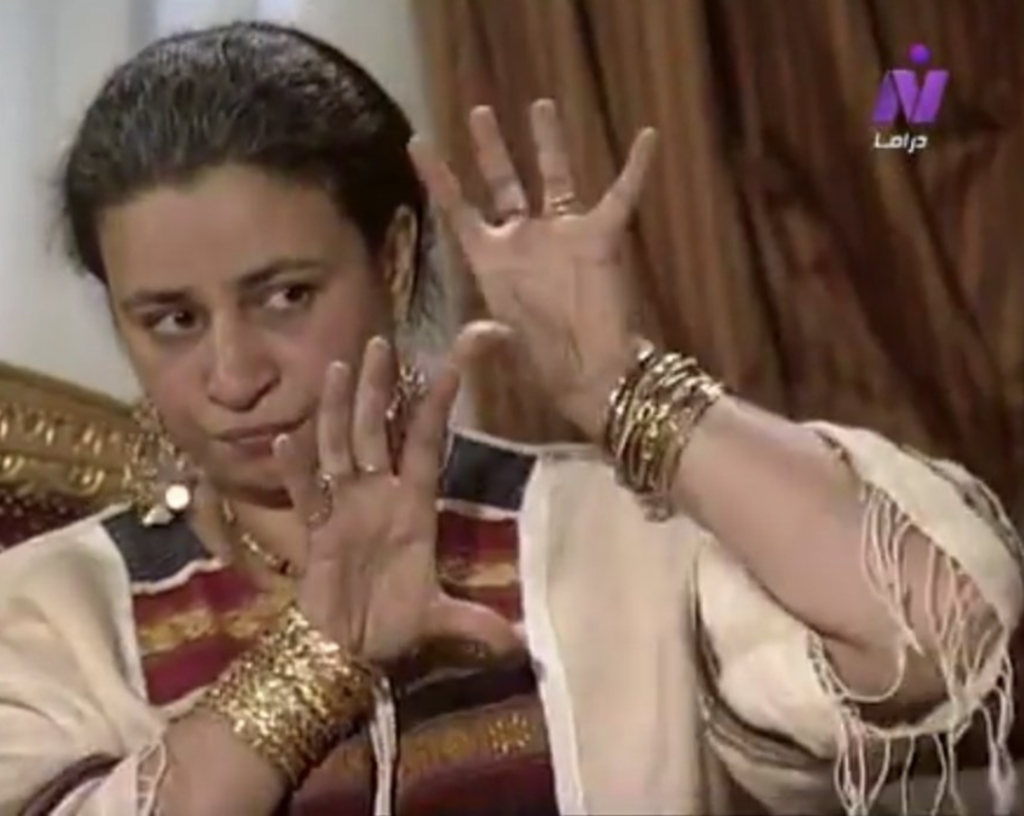Evil Eye in Arab Culture
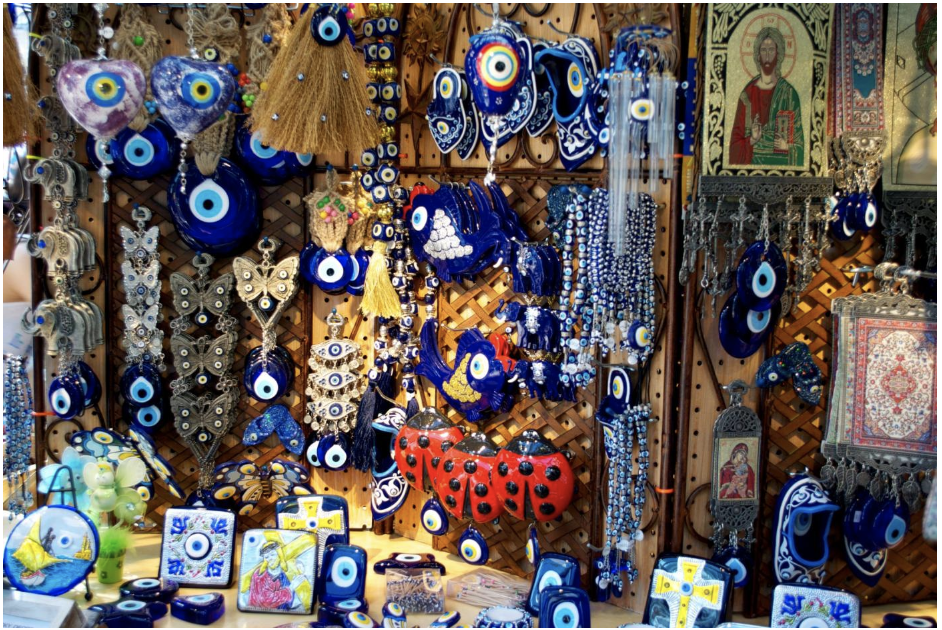
By: Nevin Girgis / Arab America Contributing Writer
Subsequent to religious symbols, the next most popular symbol in the Middle East is the Evil Eye. When you witness an Arab girl in public, almost immediately, you notice an Evil Eye amulet around her neck, wrist, or ankle. Something as small as a piece of jewelry is an incredibly significant part of Arab culture.
History
Believed to be originating in Greece around 500 B.C., the Evil Eye is still a symbol of superstition and warding off jealousy and evil spirits in several cultures. “The evil eye is a curse from Greek culture that has been passed through many decades and still exists today. It states that when someone is envious of you; they’ll have the power to give you an ‘evil glare’ and send bad luck your way”(Monica Vinader). Although supposedly outdated, but extremely meaningful and taken incredibly serious in most Arab households. Commonly known by the Arab moms/ aunts as ‘Ayn’ or ‘Ayn al Hasad’ which translates to ‘eye’/’eye of envy’.
In Islam
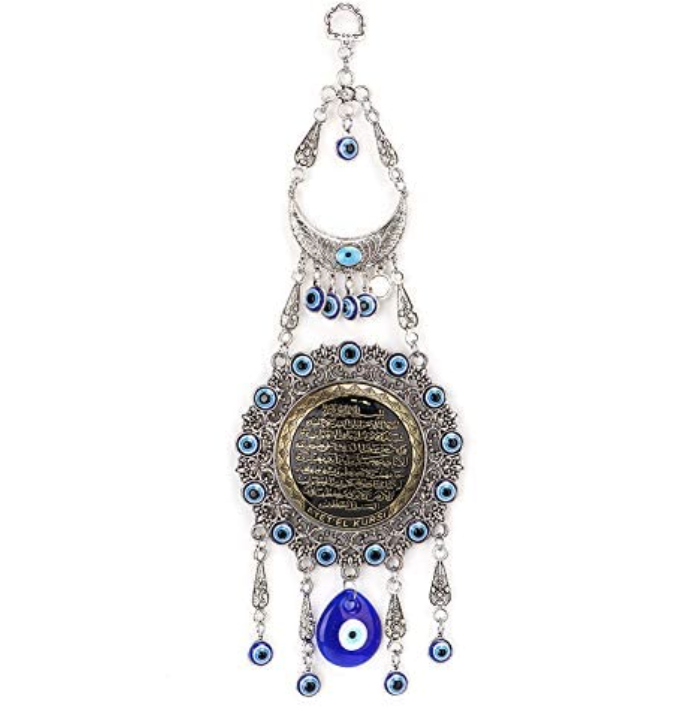
Widely, Muslims believe in the Evil Eye, however, through actual religious belief not supported as much “Islamic tradition also holds that Muslims should rely on God alone to keep them safe from sorcery and malicious spirits rather than resorting to talismans, which are charms or amulets bearing symbols or precious stones believed to have magical powers, or other means of protection” (PewResearch).
Expression/ How to ward off
Amulets/ Jewelry
The leading way to express the belief of the Evil Eye is through the use of jewelry and amulet decorations. Overall, people hang amulet decorations on walls of houses/ car’s rear view mirrors for the purpose of protection of their house/car. However, they wear jewelry covered with Evil Eye for protection themselves from other peoples envious eyes. For instance, there are many amulets in the typical round blue and white design, and also, in the shape of an eye to “deflect undesired negative stare away” (Nasma).
Incense
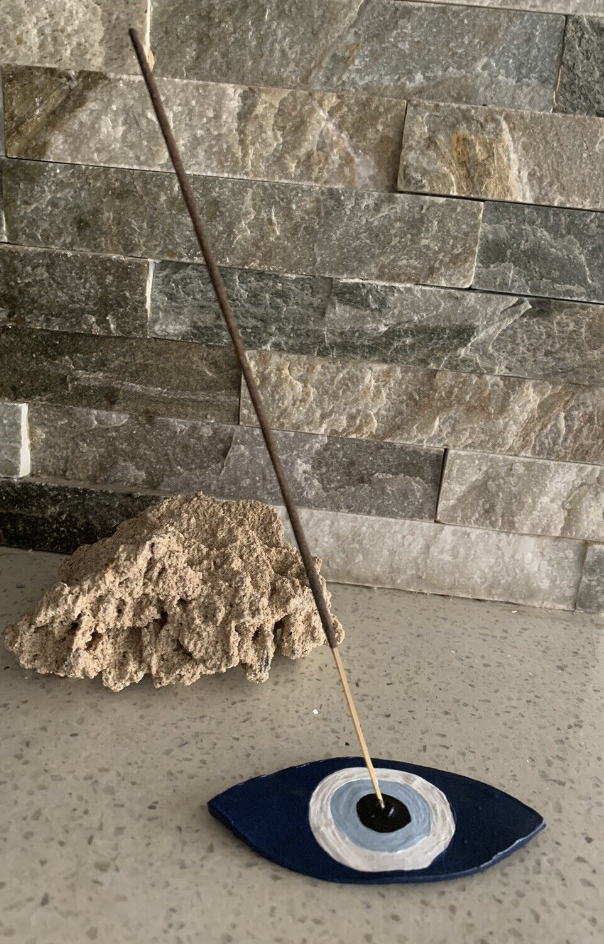
The burning of incense is a typical practice in Arab households. One of its purposes is to “cleanse the negative energy cast by the evil eye and ward off evil spirits” (Nasma). It’s not necessary for incense holders to be in shape of an eye to ward off evil of envious people. Additionally, any incense is applicable.
Egyptian Culture
Specifically in Egyptian culture, the Evil Eye is taken particularly seriously. If anyone feels a person is giving them the Evil Eye they put out their 2 hands with their 5 fingers out (image 1) and say the phrase “Khamsa we Khmesa”. This phrase translates to “Five and Thursday”, five being the amount of fingers on one hand and Thursday being the fifth day of the week.
To Egyptians, if you do get hit by the Evil Eye, you do as Abla Kamel does in Image 2; you make a ‘3aroosa’/ doll. A ‘3aroosa’ is a piece of paper cut in the shape of a body where someone proceeds to poke holes with a needle through the paper. With each poke, the person agressively says “in the eye of “blank”, blank being a person you think gave you ‘ayn’. Finally, after the paper person is filled with holes, a flame is joined with the paper completing the cleansing process.
Mal De Ojo
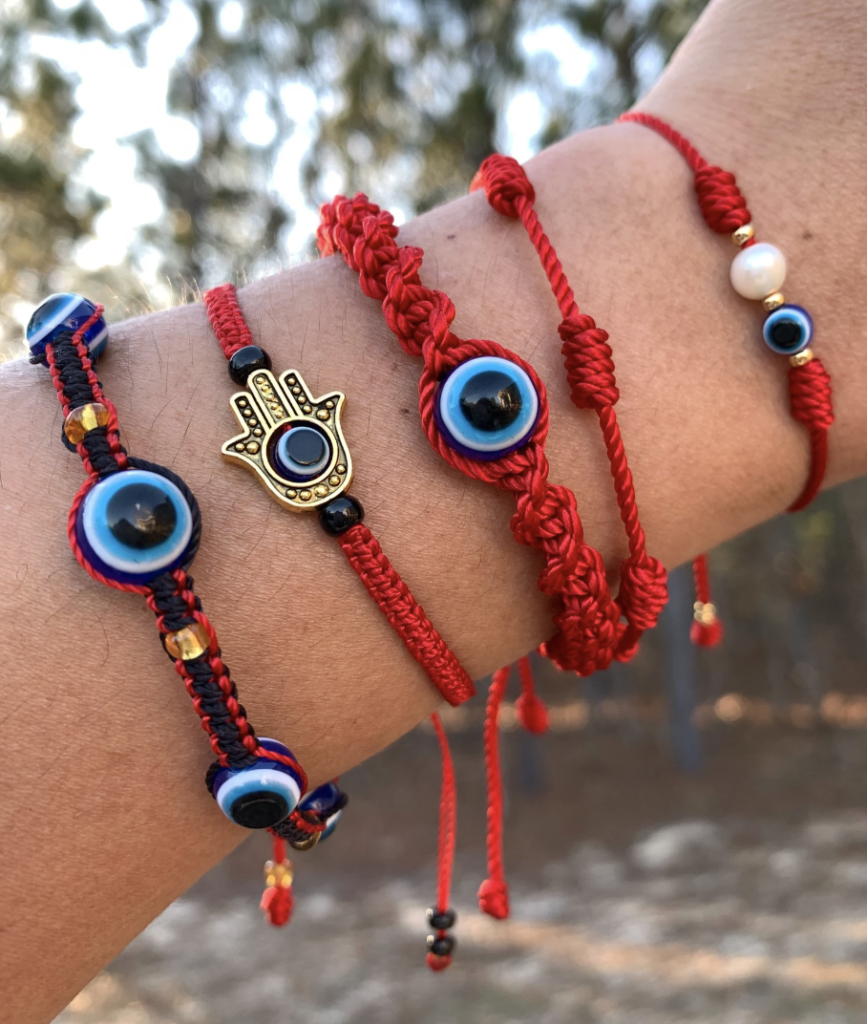
In Mexican culture, a rendition of the Evil Eye exists called ‘Mal de Ojo’. “The belief in the region of the Indigenous Maya is that the evil eye can cause a baby or young child to get sick by the look or contact from many different circumstances.” (Naatik Mexico). Traditionally, there are 7 knots tied around the bracelet affecting its owner even stronger and fulfill each of your wishes.
Is it real?
Despite the idea that it is a myth, many Arabs still believe it is real, hence why it’s still a huge part of the culture. Unfortunately, many have experienced the harm of peoples eyes. This is evident through the physical breakage of jewelry when it has been working to prevent a curse.
Check out Arab America’s blog here!



